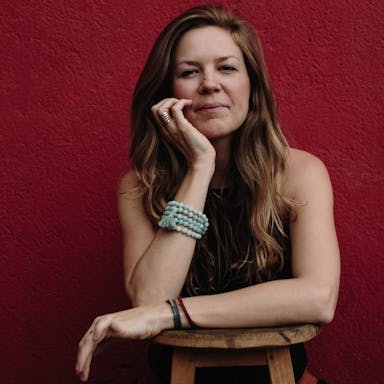
Oaxaca: The Mexican City Known for Mezcal and Mole
Oaxaca is the picturesque capital city of the Mexican state with the same name. With a population of 270,000, the city is an increasingly popular tourist destination that draws visitors with its impressive cuisine and rich cultural offerings, and delights them with its photogenic beauty and air rich with the scent of corn, chocolate, and mezcal.
The narrow streets are lined with multi-colored buildings—which pop with extra color in spring when trees flower in explosions of yellows, pinks, and purples— encircled by undulating mountains and capped by a sky that offers majestic displays from morning to night.
Far more than Spanish spoken in Oaxaca
The rugged terrain of the state of Oaxaca has kept many communities rather isolated, meaning that language and traditions have sustained and today Oaxaca is one of the most culturally diverse states in Mexico. According to national statistics from 2020, just over one-third of all Oaxacans speak an Indigenous language, with 16 different Indigenous languages spoken in the state.
The most common are Zapotec and Mixtec, and within these there exist multiple dialects. In the capital, Indigenous languages can often be heard in the many markets where a number of the sellers travel in from communities outside the city in order to sell their produce or handicrafts.
Archaeological marvels and mosaics

Overlooking the city of Oaxaca, and visible from many parts of the city center, is the impressive archaeological site of Monte Alban. Founded around 500 BCE, the city enjoyed the height of its power from 100 BCE to 200 CE, with an estimated population of around 35,000.
Today, the main plaza has been carefully excavated and the tallest structures offer impressive views over the city from the top. Los Danzantes (the dancers), naked figures of men carved into stone in a number of different contortions found at the site, are said to be some of the earliest of their kind and are possible depictions of sacrificial victims.
Mitla is another important archaeological site, located around 30 miles from the city center. This Zapotec ceremonial center is famous for its unique mosaic work set against bright red stucco, which remains vibrant in some parts of the site to this day. The red-domed San Pablo Apostol church which was built on a pre-Hispanic platform alongside the excavated site and whose foundations were laid in 1590, speaks to the desire of the Spanish conquistadors to turn the native Mexicans away from their Indigenous faith.
Any excuse for a parade
Firecrackers, fireworks, brass bands, dancers, and huge puppets are just a few of the ingredients that make up Oaxaca’s famous parades, known locally as calendas.
With seemingly any excuse for a calenda, they pulse through the city almost every weekend and often during the week, gathering followers and momentum as they go. In some calendas, women dance in traditional dress with baskets on their heads. Sometimes these baskets contain fireworks that are shot out into the air as the women spin.
Huge papier-mâché puppet figures called monos, often depicting the bride and groom from a wedding or dancers in traditional dress, stand some 13 feet high and are moved through the streets by the talented dancers inside them. If you stay in Oaxaca long enough, you will start to know the bouncing rhythms played by the brass bands as the parades bop through the center of the city.
Since most of the calendas are privately organized for weddings, graduations, and other celebrations (except during festivals like the Guelaguetza and Day of the Dead) there is no real way of knowing when a calenda might occur, but they are so common that most visitors will get to enjoy the sight.
The gastronomic capital of Mexico

Oaxaca is considered by many to be the gastronomic capital of Mexico and with evidence that the first domestication of corn—Mexico’s most important staple—occurred in the state, that claim can only be boosted.
Whether eating a freshly made quesadilla full of homemade salsa and quesillo (Oaxaca’s stringy white cheese) from a street stall or tucking into a rich mole sauce made with upwards of 25 ingredients, you’ll find flavors that are deep and varied and uniquely Oaxacan.
The word mole comes from the Nahuatl word mōlli, which simply means sauce (guacamole is sauce made from avocado, for example). Oaxaca is known for its mole and particularly for having seven different types: amarillo, negro, coloradito, verde, chichilo, manchamanteles, and rojo. Each sauce is vastly different and are all worth sampling. Las Quince Letras restaurant offers mole tastings and explanations about the process of making these complex sauces.
Close to the central 20 de Noviembre Market, the streets smell rich with cacao, thanks to the chocolate shops grinding cacao beans and sugar for bars of Oaxacan chocolate ready for dissolving in water for the frothiest hot chocolates. Insects are also on the menu in Oaxaca and local legend says if you eat grasshoppers while visiting, you will definitely return, so the tasty crunchy treat would be worth trying even if it wasn’t delicious (and it is!).
This wonderful song by Grammy award-winning Oaxacan Lila Downs is a love song to Oaxaca and all its delicious flavors.
From dances to radishes, festivals abound
During the Guelaguetza festival, parades occur almost daily as dancers from all eight regions of Oaxaca move through the streets giving displays to the public.
The Guelaguetza, which derives its name from the Zapotec word Guendalezaa, meaning ‘offering,’ is a dance show that always takes place in July, on the two Mondays closest to the Catholic celebrations to the Virgen del Carmen (July 19 and 26 in 2021). Dances—both Pre-Hispanic and modern—are performed at the city’s music stadium on Fortin hill. It is a stunning display of music, traditional dress, and the rich culture of the region. During the week between the two shows the city is bustling with people and events.
In December, another long-standing festival called the Night of the Radishes takes place. The event has been running since 1897, when carving radishes to attract buyers in the market was turned into a competition by the Municipal President, Francisco Vasconcelos. Now, every year on December 23, the most intricately carved radishes are displayed in the city’s main square (zócalo) and judged by a local panel. The radishes, which depict everything from dragons and angels to Oaxaca market scenes or even Guelaguetza dance displays, make for impressive viewing.
From moonshine to liquid gold

Once the local moonshine that was (and often still is) traded in plastic bottles by locals, the agave-based spirit mezcal has become one of Oaxaca’s biggest exports, with bottles now selling for prices that would have been unimaginable even a decade ago.
Unlike tequila, which is only made from blue agave, mezcal can be made from a number of different agave plants. The flavor varies from herby and flowery to earthy and smokey depending on the type of agave used.
The intricacies of the different mezcal varieties can be gleaned from local experts found at places like In Situ or Mezcaloteca who offer tastings and deep dives into the ‘nectar of the gods,’ while trips to visit los maestros mezcaleros (the master mezcal producers) with local tour guide Oaxacking show visitors just how much work goes into making every drop.
Where every day is market day
Almost any day in Oaxaca is market day. The 20 de Noviembre and Benito Juárez markets are open daily, selling everything from grasshoppers to huarache sandals and much more in between.
Roaming through the markets provides insight into so much of Oaxacan life and indulges all the senses: the sound of a local musician serenading the shoppers, the scents of fresh fruits, blooming lilies, spicy chiles, and corn tortillas. Stop for a freshly made juice and a steaming hot quesadilla or head to the smoky Pasillo de Humo in the 20 de Noviembre market, where meat and veg, bought from passing merchants, is charred on the grill before your eyes.
Outside the city, local markets are a great place to witness life in action and to find handicrafts specific to that area. On Sundays, the Tlacolula market (about 20 miles southeast of the city center) thrums with activity and is a great place to enjoy barbacoa tacos before shopping for traditional aprons and beautiful earthenware. Many of the female merchants wear traditional brightly colored headscarves and can often be spotted carrying a live turkey or two.
The Friday market in Ocotlán (about 25 miles south of Oaxaca city) is a great place to be fed by the infamous Frida Kahlo lookalike and watch the local blacksmith and knife maker, Apolinar Aguilar Velasco, in action.
Handicraft heaven

The variety of mezcal produced in Oaxaca is probably only beaten by the huge number of different handicrafts. Villages surrounding the capital and much further afield produce everything from clothes, belts, pottery, rugs, and the famous Oaxacan alebrijes (mystical, brightly colored animal and animal-like figures carved from wood, made extra famous by the Disney animated film Coco).
While artisans will often sell their crafts in the city center, a more in-depth understanding of their crafts can be enjoyed when visiting the artisans’ workshops. In Teotitlán del Valle, a village famous for its rugs and weaving, locals offer visitors a chance to learn how to comb wool and make natural dyes with everything from pomegranates to almonds. And in Santo Tomas Jalieza, the artisans demonstrate the use of backstrap looms to make everything from belts and bags to intricately woven bracelets.
Muertos magic

Streets lined with offerings and altars, the air full with the scent of cempasúchil (Mexican marigolds), and a slight drop in temperatures all mean that Day of the Dead has arrived in Oaxaca. The annual event takes place November 1 and 2 and is a magical time to be in the city and to honor those who have gone before.
Parades abound and cemeteries light up with candles and decorations. The markets are bursting with flowers, incense, day of the dead bread, and papel picado (colorful paper flags) with which to prepare an altar to loved ones who have passed.
Join Going and save hundreds on cheap flights to Oaxaca and around the world.
More Mexico destinations
Published October 26, 2023
Last updated December 19, 2023
Articles you might like
View AllTreat your travel to cheap flights
Most deals are 40-90% off normal prices with great itineraries from the best airlines. If it's not an amazing deal, we won't send it. Sign up for free to start getting flight alerts.




